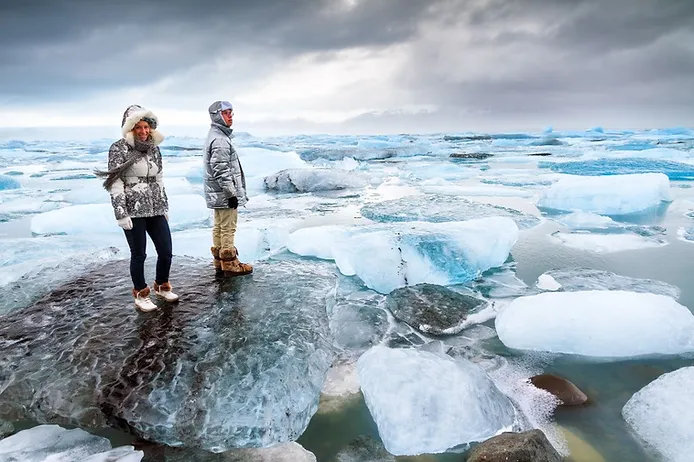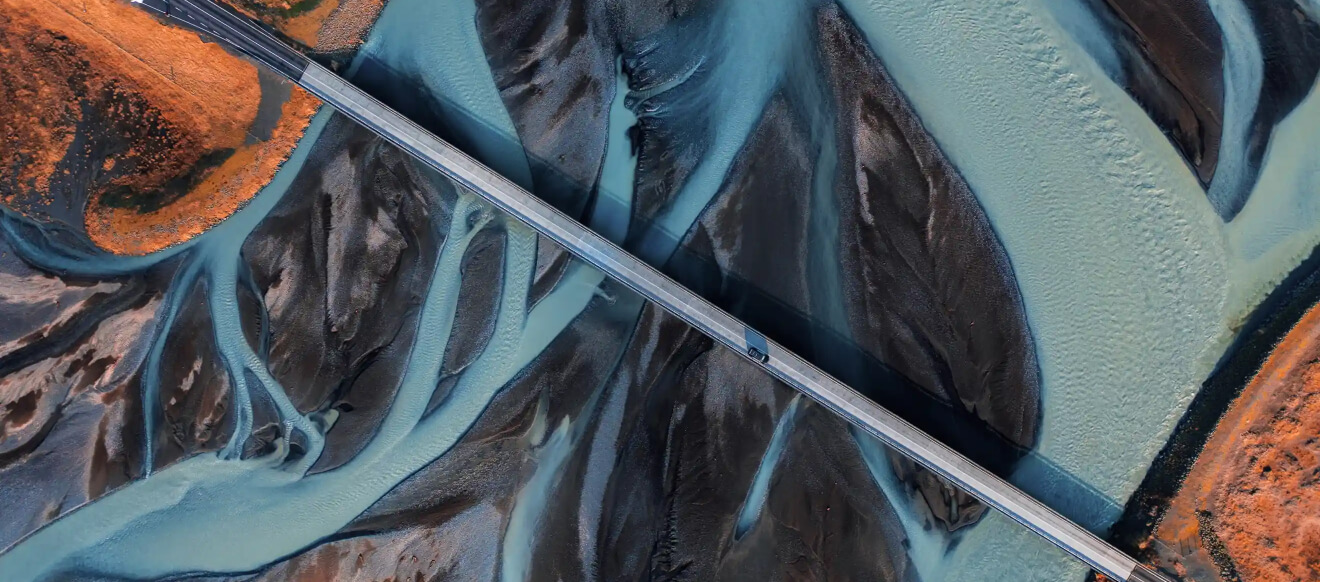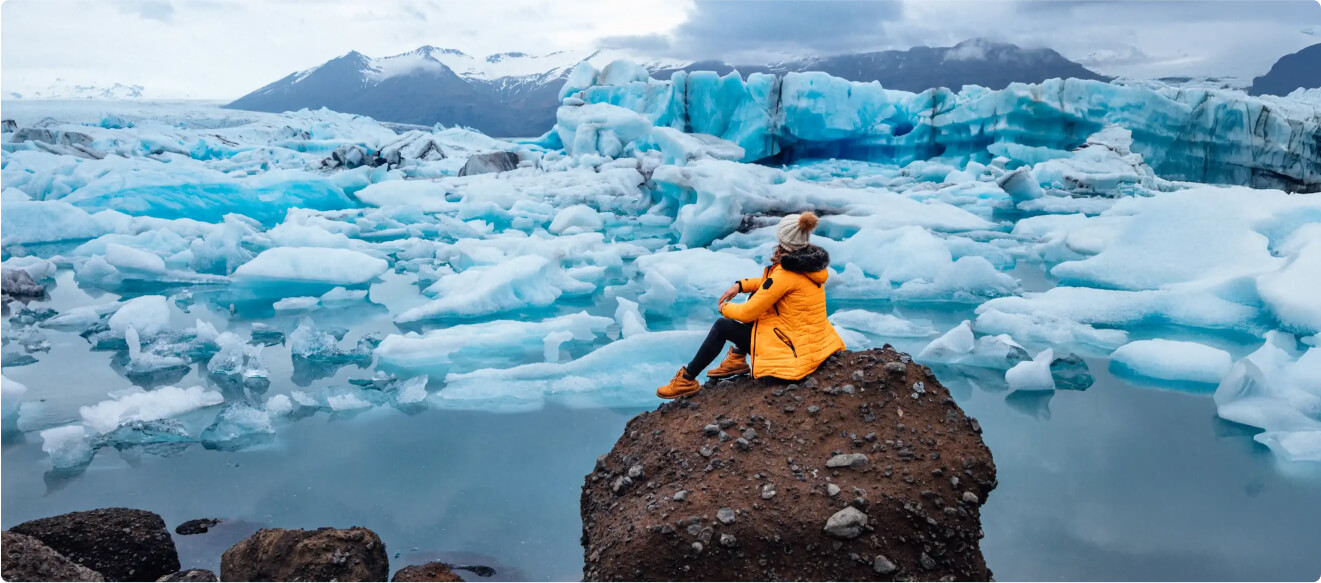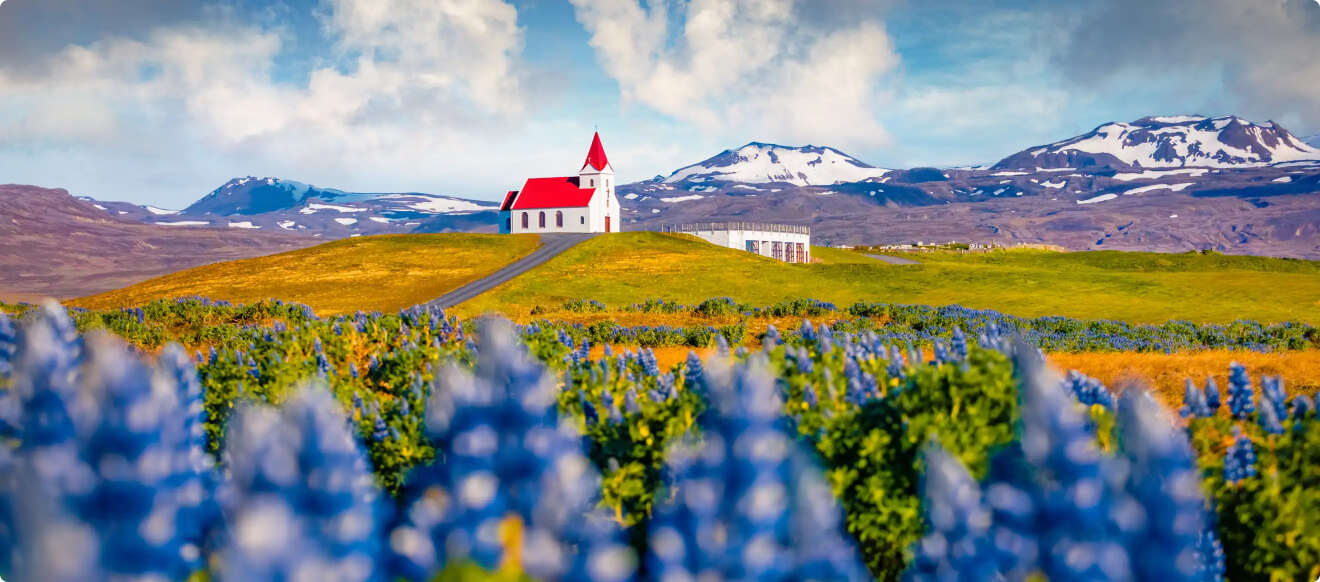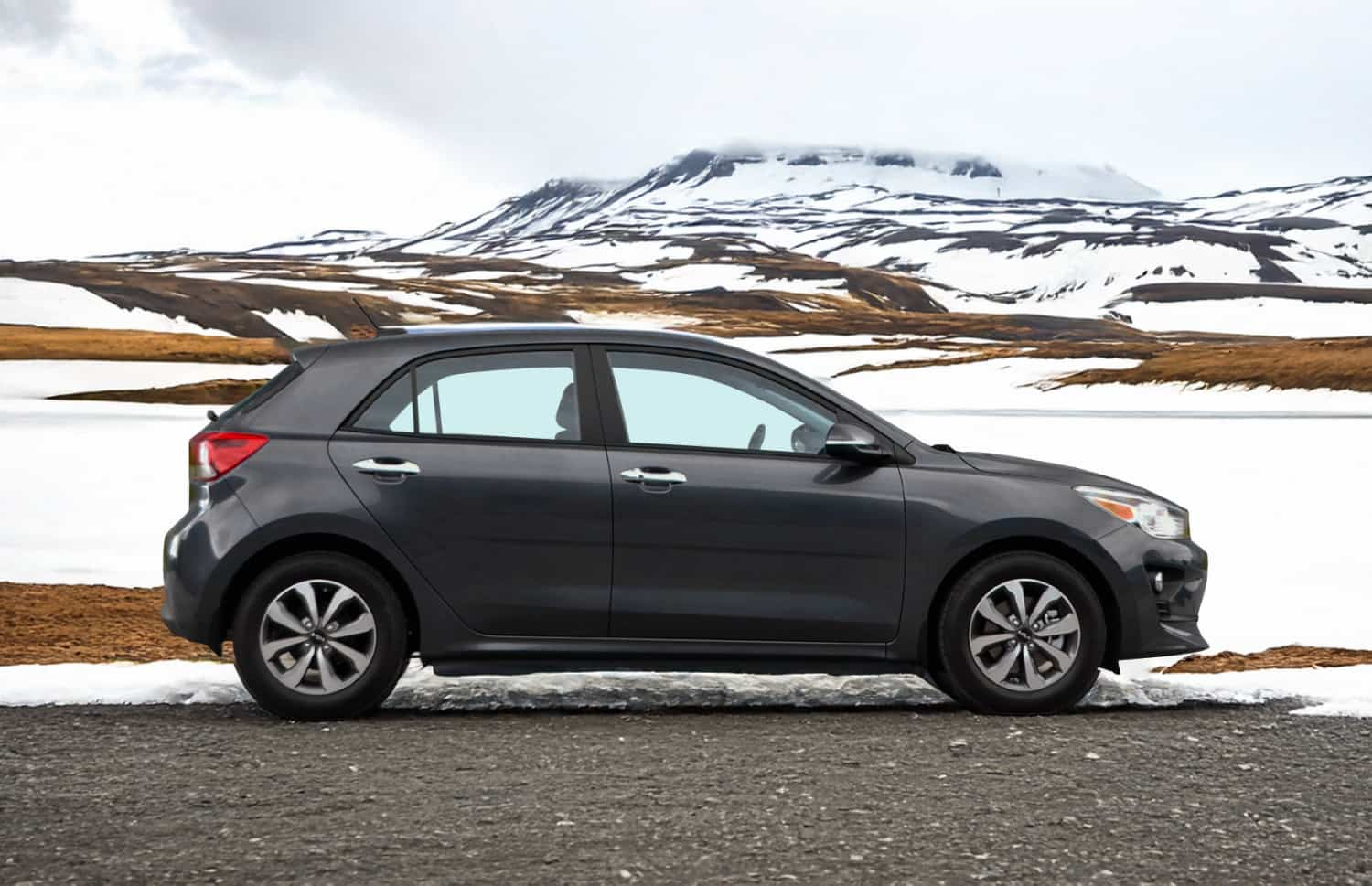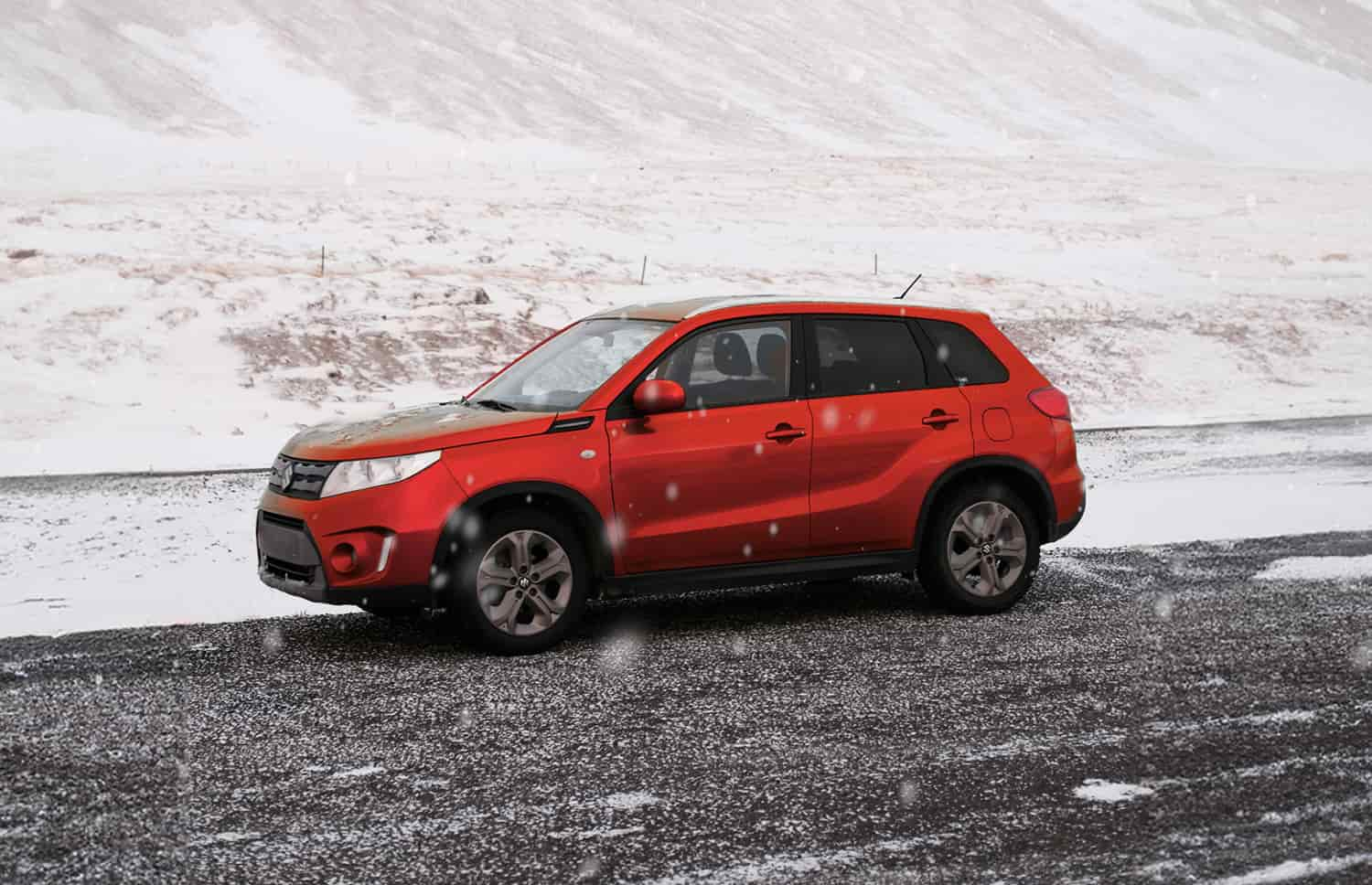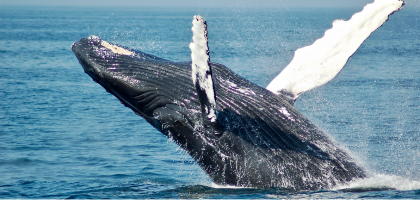With their startling cyan-blue icebergs and turquoise waters, these lagoons and lakes are ever-changing spectacles. As the seasons ebb and flow and the temperature and weather in Iceland changes with them, so too do its glacial lagoons. In this article, we’ll take you on a tour of our favorite lagoons in the Land of Fire and Ice. We’ll be covering the following:
-
What is a glacier lagoon?
-
The difference between a glacial lagoon and a glacial lake
-
The most famous glacial lagoon in Iceland – Jokulsarlon Lagoon
-
Other glacial lagoons and lakes in South Iceland
-
Glacial lagoons and lakes in East Iceland
-
Glacial lagoons and lakes in North Iceland
-
Glacial lagoons and lakes in West Iceland
What is a glacial lagoon?
Glacial lagoons are formed when a glacier begins to retreat away from the ocean. As a glacier melts and recedes it leaves an indentation in the earth that is then filled with melted water. The resulting lagoon is connected both to the open ocean and to the arm or tongue of the retreating glacier. The result is an ever-changing and often spectacular natural wonder.
One striking feature of a glacial lagoon is that they are usually dotted with what is known as icebergs. As the glacier retreats, great chunks of ice crack and fall from the main body of the glacier. They crash into the water below and then bob back up again as icebergs. They then float their way slowly across the lagoon. Some icebergs gradually melt into the waters of the lagoon, while others make their way out to sea and become further broken up there.
Along their way they create a stunning spectacle of icy sculptures that are endlessly fascinating. Sometimes there will be dark layers of volcanic matter in the ice, or streaks of rusty brown from where the glacier has scraped across the land.
The deep blue ice is the oldest of all and is densely packed. Have you ever wonder why glaciers are blue? Well, this beautiful color has been created by hundreds of years of compression. Slowly over time, all of the air is pressed out, thus changing its appearance. The more recently arrived ice appears white as it still has lots of air pockets. As the icebergs melt and flip in the water their colours gradually change, too.
If you are visiting a glacial lagoon, here’s a word on safety: do not step on any ice, as it may be thinner than it appears. Also, never try to stand on an iceberg as they can very easily flip over at any point. Just keep a safe distance and admire them all from afar.

The difference between a glacial lagoon and a glacial lake
A glacial lagoon is a body of water connected both to a glacier and to the ocean. On the other hand, a glacial lake is landlocked which means it has the glacier on one side with the rest being bound by land. The broken off icebergs behave a little differently in a lake and are usually flatter. Rather than making their way almost intact out to the ocean, they gradually melt into the waters of the lake.
Jokulsarlon Lagoon: The most famous glacial lagoon in Iceland
The must-see glacial lagoon in Iceland has to be the awe-inspiring Jokulsarlon Lagoon. Located on Iceland’s South Coast, the Jokulsarlon Lagoon is named after the glacier of the same name. It is actually part of the vast Vatnajökull ice cap that covers much of the Vatnajökull National Park.
If you’re hiring a car in Iceland, then getting here is pretty simple at any time of year. Jokulsarlon is a short drive off of the famous Iceland Ring Road route, about five hours east of Reykjavík. The small coastal town of Vik makes a great base from which to explore the area. And don’t worry– there’s a lot to do here besides visiting the lagoon.
Things to do at the Jokulsarlon Glacial Lagoon
The main activity at Jokulsarlon is to stare in wonder as giant icebergs make their slow way across the lagoon. In the summer you might also be able to spot seals playing in the waters here.
Boat trips in Jokulsarlon are available from April to October for those who want to get a better look at the icebergs and local wildlife. Small vessels will tour you around the lagoon, bringing you closer to the great glacier wall. It is truly a magical experience to see the glaciers from this vantage point.
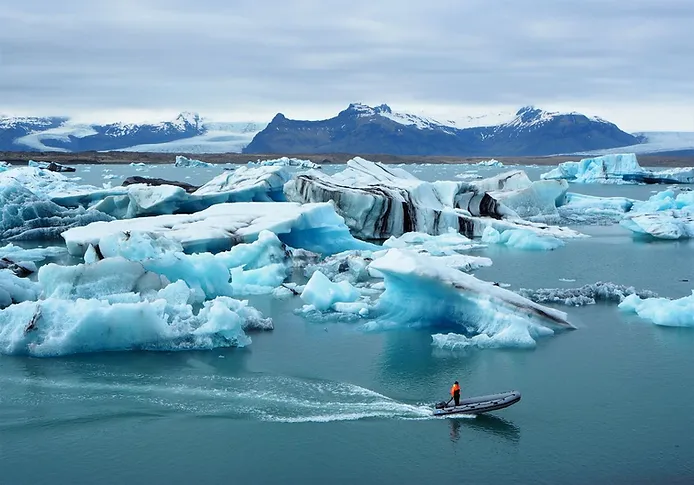
When the season turns to winter and the ice is stable, Jokulsarlon glacier becomes a real icy wonderland.
It is during the wintry season when visitors can go glacier hiking in Iceland by joining a guided tour. There, they'll walk across the surface of the glacier and peer into startling crevasses and gaze across the vast expanse of the ice. If you stand quietly, you can even hear the creak and groan of the glacier moving infinitely slowly underfoot.
For more adventurous visitors, there are opportunities to join snowmobile tours, go ice climbing or explore as many ice caves in Iceland as you wish! Venturing inside the glacier will allow you to see the brilliant blues of the compacted ice even better. Deep inside is where the oldest and most intensely blue ice can be found.
The final flourish of the Jokulsarlon Glacial Lagoon is Diamond Beach. Just around the coast from the lagoon is a swathe of perfect black sand. As the icebergs from the lagoon hit the ocean waves they are broken up into smaller pieces. They are then washed up on the black sand beach. Sparkling in the sunshine, they appear like bright diamonds on black satin. It’s pretty darn spectacular!
Other glacial lagoons and glacial lakes in South Iceland
Fjallsárlón glacial lake
Just a fifteen-minute drive south of Jokulsarlon and a short hop from the Ring Road is the lovely Fjallsárlón glacial lake. This lake is found at the edge of the Fjallsjökull glacier. It is a smaller body of water than the one at Jokulsarlon, but it is still very much worth a visit.
The striking feature of this glacial lake is that the glacier is much closer to the shore. Here, visitors can walk to the edge of the lake and get an up-close view of the glacier wall. The mighty Öræfajökull volcano rises up behind it too, so it’s pretty spectacular. There will be fewer visitors at Fjallsárlón, so you’ll get to see it without the crowds that often accumulate at Jokulsarlon.
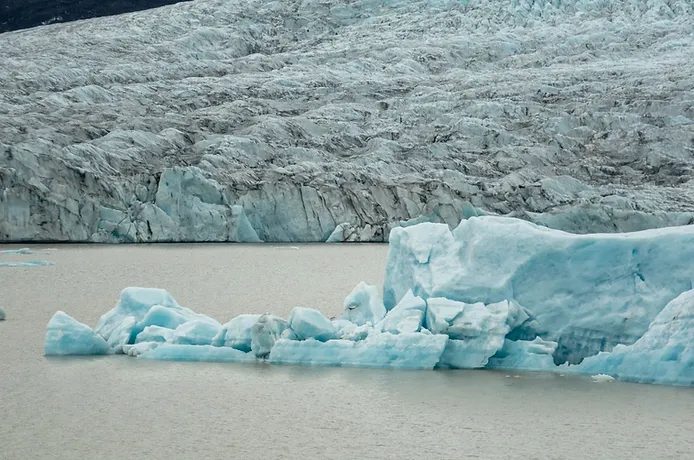
Svínafellslón glacial lake
This glacial lake is found in the popular hiking area of Skaftafell not far from Vatnajökull in South Iceland. It’s a small lake of a greenish hue with a multitude of brown and blue icebergs bobbing across it. This is a fantastic area for hiking and there are many beautiful trails that lead past the glacial lake.
Grænalón glacial lake
Hidden away in the Southern Highlands, the lonely Grænalón glacial lake is very tricky to reach. To get there you will need to either embark on a lengthy hike or charter a helicopter. For those that do undergo the challenge, they will find spectacular scenery and a true icy wilderness to admire.
Glacial lagoons and lakes in East Iceland
Hainabergsjökull and Hoffellsjökull glacial lakes
There are two beautiful glacial lakes located further northeast along the huge Vajtnajökull ice cap. Famously known amongst locals and Icelandic adventure enthusiasts, these two are much less visited by tourists. This is not to do with any lack on their part, but more to do with their remote and wild location.
Hainabergsjökull and Hoffellsjökull are neighbours of sorts with about 18 miles between them. They are to be found way off of the Ring Road route and to reach them both takes some effort. Those keen to get there would need to hire a 4x4 in Reykjavik to get close and then hike to actually reach them.
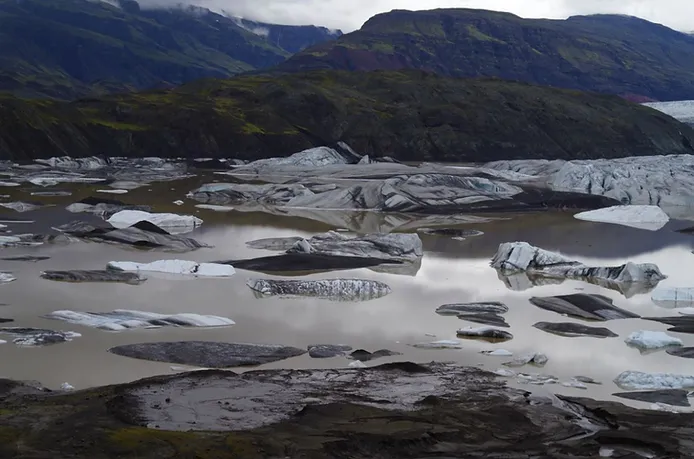
Both lakes are large and impressive and both are adorned with beautiful floating icebergs. The areas around them are stunning to hike through and if you venture in you’ll be one of very few other visitors. Having these vast and wild vistas to yourself is an incredibly privileged experience and one you won’t soon forget.
Glacial lagoons and lakes in North Iceland
Kaldalón glacial lagoon
Kaldalón is in fact the only glacial lagoon or lake in North Iceland. Located in the remote and beautiful Westfjords, it is quite an adventure to arrive at this scenic location. But both the journey and destination make it a worthwhile road trip. As it expands, Kaldalón is fast becoming more of a fjord than a lagoon.
The nearby Hornstrandir Nature Reserve is another good reason to venture this far north. But note that this is a summertime only destination. In the winter months, this land is the sole realm of the snowy white Arctic fox.
What about glacial lagoons in West Iceland?
Unfortunately, there are no glacial lagoons in West Iceland. If you happen to be on a trip through the mesmerizing Snaefellness Peninsula, know that you can still see lakes instead.
Djúpalón Lake
At the very tip of the Snæfellsjökull National Park you will find Djúpalón Lake. While it is not very deep at only 5 meters, the views with the glacier towering right behind is a sight to behold.
The area is surrounded by lava rock formations and a beautiful black sand beach: Djúpalónssandur, whose name means Deep Lagoon’s Sand, in reference to the Djúpalón Lake.
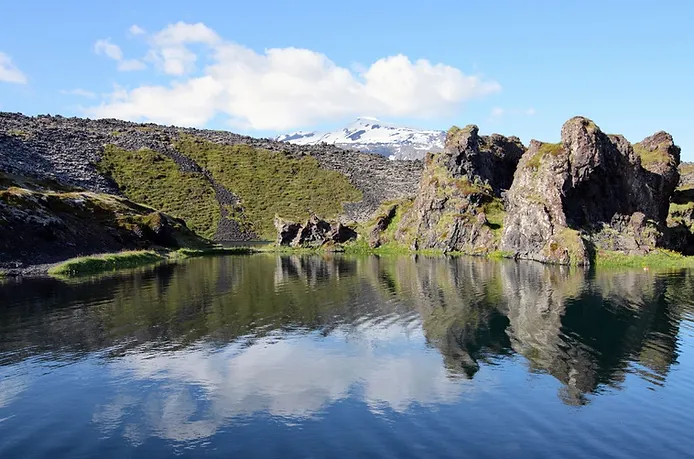
Check out these magical glacial lagoons in Iceland!
Make the most of your time in Iceland by checking out something a bit different. Visiting these lagoons means you will see thousands of years of constant transformation. These are natural changes that created otherworldly landscapes, making Iceland the unique place it is today.
Book your car today and head off on this once-in-a-lifetime journey!




